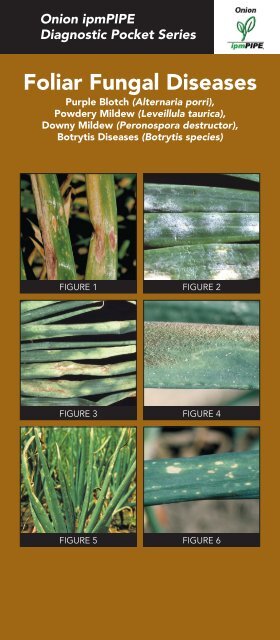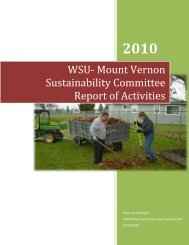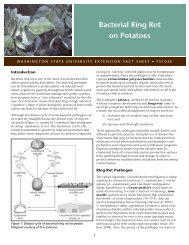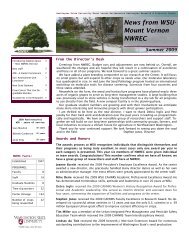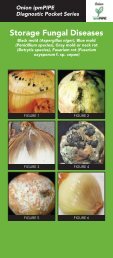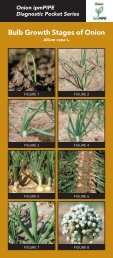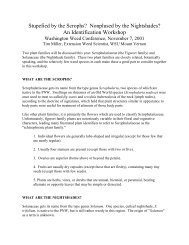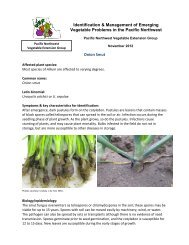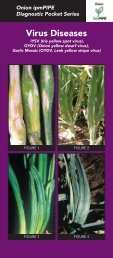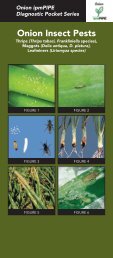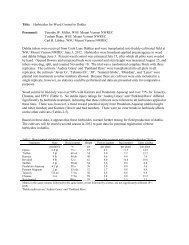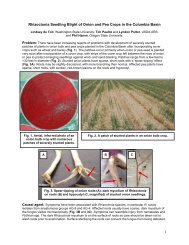Foliar Fungal Diseases (pdf) - Planalytics
Foliar Fungal Diseases (pdf) - Planalytics
Foliar Fungal Diseases (pdf) - Planalytics
- No tags were found...
You also want an ePaper? Increase the reach of your titles
YUMPU automatically turns print PDFs into web optimized ePapers that Google loves.
Onion ipmPIPEDiagnostic Pocket Series<strong>Foliar</strong> <strong>Fungal</strong> <strong>Diseases</strong>Purple Blotch (Alternaria porri),Powdery Mildew (Leveillula taurica),Downy Mildew (Peronospora destructor),Botrytis <strong>Diseases</strong> (Botrytis species)Figure 1 Figure 2Figure 3 Figure 4Figure 5 Figure 6
Onion ipmPIPEDiagnostic Pocket Series<strong>Foliar</strong> <strong>Fungal</strong> <strong>Diseases</strong>AUTHORS: S. K. Mohan (Univ. of Idaho), M. K. Hausbeck(Michigan State University) and N. A. Tisserat (ColoradoState University) PHOTOGRAPHS: Courtesy of S. K. Mohanand H. F. Schwartz [01/2011]Common Hosts: Onion, GarlicSymptoms (on Onion):Figure 1 • Purple blotch may appear on leaves or seedstalks as small, water-soaked lesions that develop whitecenters. The lesion margin is a shade of red or purple,surrounded by a yellow zone that may extend 1 inch [2.5cm] or larger. Lesion centers may contain brown to dark grayspores of the fungus.Figure 2 • Powdery mildew includes circular to oblong,white to grayish white patches of fungal growth withirregular margins; often after initiation of bulbing.Figures 3 & 4 • Downy mildew commonly starts in spots ina field and spreads to surrounding areas. Initial symptomsappear as pale, elongate patches that turn light tan tobrown on the foliage, affected leaf or seed stem tissuesduring moist periods.Figures 5 & 6 • Botrytis (blast, leaf blight) may appear as asmall white, sunken, elliptical lesion (less than 1/8 inch or 2mm) with necrotic center. Multiple lesions may develop onthe leaf, and cause a tip die-back and blighting of the leaf.Factors Favoring:• Most of these fungi are favored by temperatures below27°C (80°F); but can be active up to 32°C (90°F).• These pathogens are favored by free moisture and highhumidity (greater than 75%) during production and preharvest.• These foliar diseases are favored by frequent cropping toAlliums (every 3–4 years), planting of contaminated seed(Botrytis), transplants and sets of susceptible varieties;high plant density; and storms.Sponsored in part by:ADDITIONAL RESOURCES AVAILABLE AT:http://onion.ipmpipe.orghttp://wiki.bugwood.org/PIPE:Onionhttp://www.apsnet.org/ — Compendium of Onion & Garlic<strong>Diseases</strong> and Pests, 2nd Ed.


